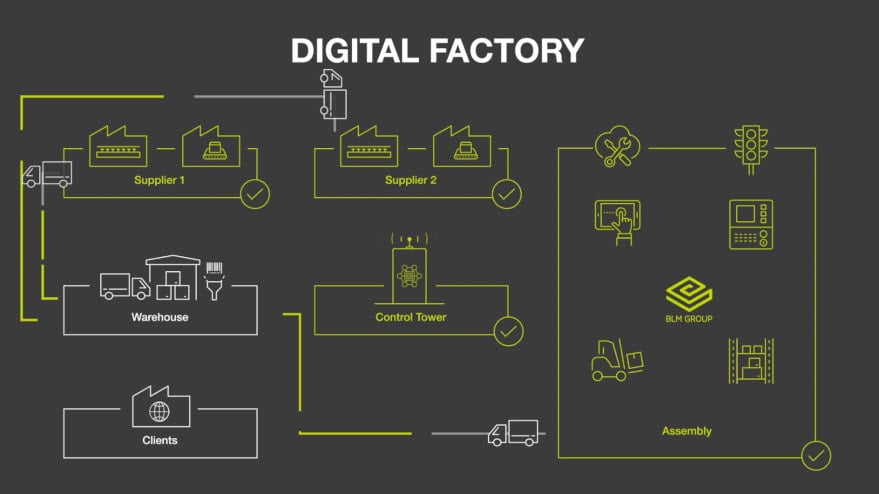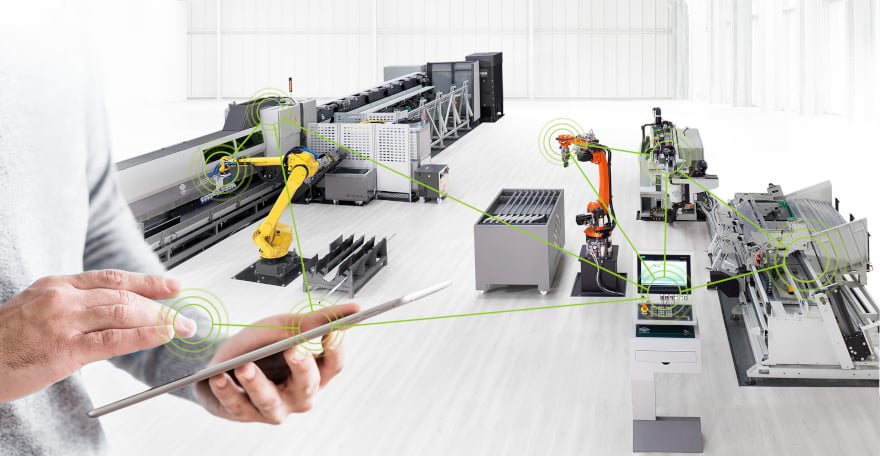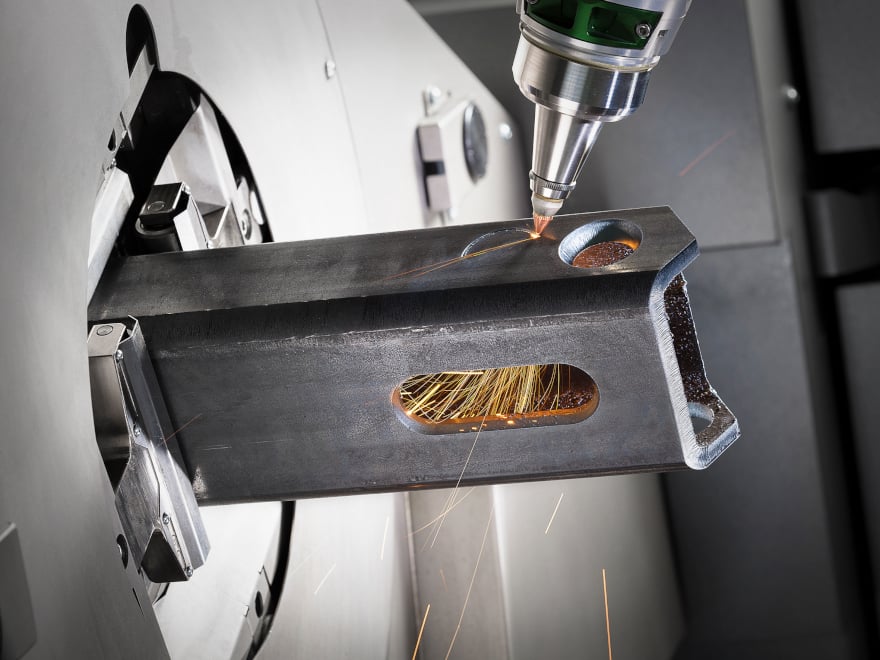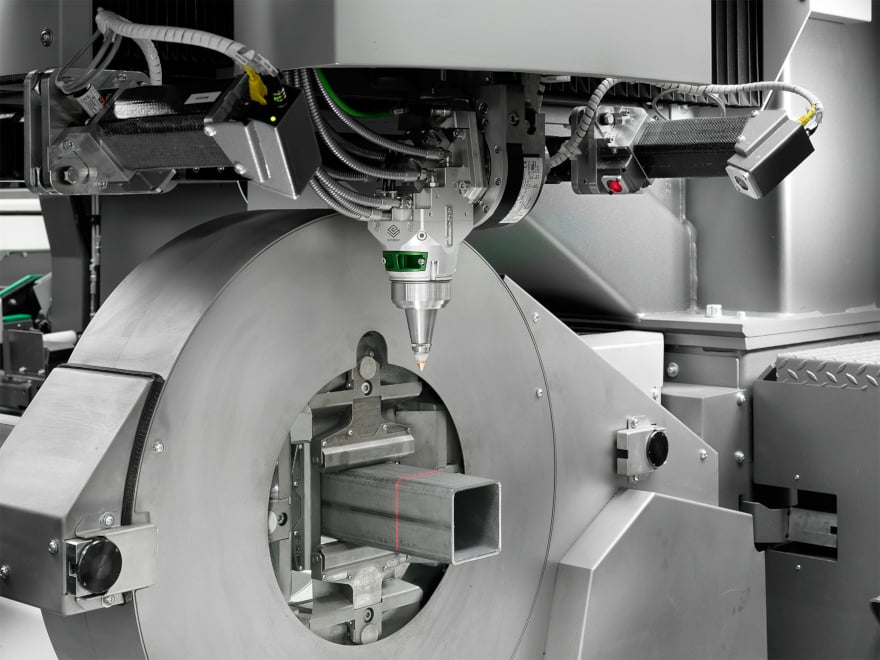It has been years since there has been such an upheaval in the world of automation and not only in the manufacturing field. We can talk about a real "Renaissance" or – as it has been called by theorists – a new industrial revolution, (the fourth to be precise).
New technologies, process data collection and analysis, increasingly sophisticated simulations, digital twins, widespread connectivity at various levels (WiFi, Bluetooth, Ethernet and soon 5G), all accompanied by the ever-present and promising growth of artificial intelligence.
The advent of automation in the first industrial revolution
The changes we are witnessing may seem less shocking compared to the first industrial revolution of 1760 in England; however, the shift will be as significant and it is clear that the direction in which we are heading is diametrically opposed to what the manufacturing industry experienced in the past era.
The first industrial revolution – between 1760 and 1830, the 70 years that changed the world – was made possible by the introduction of steam engines into factories. The manufacturing work carried out until then was performed manually with the help of natural power (animals, hydraulics, wind ) whereby the process was mechanized and divided into many elementary and repetitive operations.
Steam-driven machines imposed a new discipline, a compulsory rhythm for the workers. Productivity in factories increased significantly due in part to the low cost of labor and its abundance. We entered an era of mass production and, consequently, mass consumption. Driven by demand, it was during this time that there was also a real turning point in the use of tube in the industrial sector.
From standardization to product differentiation
More than a century later, in the era of the fourth industrial revolution, we have fully embraced automation and industrial production has risen to levels that often far exceed demand.
There are undoubtedly many differences, some of which are obvious and others less intuitive.
One is of particular interest to us in this context; product differentiation, as opposed to standardization. This aspect has become necessary to gain customers and remain competitive when facing increasingly fierce bidding scenarios of comparable capabilities and ease of access to enabling technologies.
No longer are products all the same to satisfy a common, undemanding need. Rather there is a frantic race to explore every possible market niche, diversified in terms of parts and details, to be taken into account the many opportunities for customization.
Tailor-made solutions for each individual customer trigger nothing short of a cost-reducing efficiency war.
The advent of the Digital Factory
It is in this scenario that a new level of automation is taking shape, one that goes beyond that integrated on individual production machinery to achieve integration with all the other functional areas of a company, including supply chain, process planning and optimization, quality control, warehouse management, energy efficiency and maintenance.
Each stage becomes the node of a densely connected network capable of collecting and transmitting data. The efficiency and quality of the entire production is constantly analyzed and tracked to synchronize each processing step with the logistics that feeds it.
With this information, you can anticipate corrective actions, improve the flow and use of resources, reduce the material through time and implement more effective strategies while preserving the sustainability of the company and its competitiveness.
This is why the so-called digital twins were created. These sophisticated IT solutions digitally reproduce and simulate the functioning of an entire process in detail to anticipate and compare all the effects and variations, thereby supporting companies in their organizational and production choices.
 Each stage becomes the node of a densely connected network capable of collecting and transmitting data.
Each stage becomes the node of a densely connected network capable of collecting and transmitting data.
For the same purpose, the phases of transformation and assembly of a manufacturing line are modeled inside a computer, the flows of materials and data are traced using virtual reality, highlighting all the factors that can influence efficiency.
The result of these simulations are immediately available and transmitted to the company areas and the people involved, thus exploiting an extended connectivity that pervades machinery, systems, buildings, personal workstations, mobile devices and any other device capable of receiving and storing information.
Learn more about the industry 4.0 approach to integrating processes into tubular products
 You need to envision the reality of tomorrow and how the company will be, rather than focusing on the present by making forward-looking investments that are appropriate to the future that you intend to pursue.
You need to envision the reality of tomorrow and how the company will be, rather than focusing on the present by making forward-looking investments that are appropriate to the future that you intend to pursue.
Digital factory BLM GROUP
To overcome this effect and accept these new tools with determination, it is important to embrace two important principles. The first is that of ergonomics, which must accompany all chosen solutions.
In addition to functionality, manufacturers need to ensure access to these features is simple and transparent. Simplicity and reliability in the daily use and maintenance of a device, whether onsite or remote, is a significant contribution to the value of an investment.
The second principle is that of continuous refreshing of skills, your own and those of your workforce.
These two aspects are, of course, in addition to economic assessments and absolute performance assessments in a comparison of different alternatives but often if it neglects the long-term impact. In truth, certain investments should be considered with a view to running a marathon, not the 110 meters of obstacles.
In other words, you need to envision the reality of tomorrow and how the company will be, rather than focusing on the present, by making forward-looking investments that are appropriate to the future that you intend to pursue. This will keep your competitiveness intact and you can capitalize on your experience.
 Lasertube systems can interface with the management system (ERP) providing real-time data on their operating status, integrity and maintenance conditions of components and devices mounted on the machine.
Lasertube systems can interface with the management system (ERP) providing real-time data on their operating status, integrity and maintenance conditions of components and devices mounted on the machine.
BLMGROUP has been moving in this direction for a while, in terms of connectivity and vertical integration of laser tube cutting systems, capable of interfacing with the management system (ERP) and providing real-time data on its operating status, integrity and maintenance conditions of components and devices mounted on the machine.
A large number of sensors distributed at key points keep the efficiency of the handling and cutting processes under control. Similarly, assessing and planning the necessary maintenance work remotely is easy.
Working the other way, the Lasertube systems receive the work orders with the quantities and type of processing to be carried out on defined incoming material (whole tubes), that will have already been optimized both in terms of quantity (number of bars) and length (of every single bar) to achieve the least possible waste from the company's management system.
This automatism is completed by the capacity of the system to reconfigure all the devices required by the production change, in times consistent with the previous simulations made during the production batch planning phase.
With such detailed control, you have precise estimates of the time and cost of each part produced. Information like this is invaluable in assessing the margins and sustainability of the production process.
 Lasertube systems can interface with the management system (ERP) providing real-time data on their operating status, integrity and maintenance conditions of components and devices mounted on the machine.
Lasertube systems can interface with the management system (ERP) providing real-time data on their operating status, integrity and maintenance conditions of components and devices mounted on the machine.
As far as ease of use and ergonomics are concerned, once again, it is the numerous automatisms that make the difference in a Lasertube; allowing the management of technology and cutting parameters which are automatically set according to the material (steel, stainless steel, aluminium, etc.) and optimized from the many possible combinations to meet the time and quality specifications defined in the production batch planning simulated with the BLM GROUP software.
The automatisms of a Lasertube take the quality of the material into account, its deformations or dimensional inaccuracies and the more or less intact state of the surface (presence of rust). Once again, the information collected and transmitted from the system can be used for quality and procurement strategy assessments.
The benefits of embracing change
We have entered the era of process digitization. Manufacturing companies must consider transforming machinery and processes and perhaps their business model. This transformation may strike fear into traditional industries and may be perceived as a risk but it is undoubtedly also a great opportunity.
Change is about technology, but also about people and operational processes. Automation is increasingly about moving information, not materials. Not only electromechanical automation but also traceability, repeatability and performance monitoring.
It reduces the time people spend on non-value-adding tasks, freeing them so they can focus on production or maintenance issues.
It also enhances the know-how of personnel through digital technologies, facilitating the transfer of skills between the people who have been with the company for a long time and those who are new to it. These are some of the benefits of embracing change.
However, evolution does not stop. We are already at the dawn of a major new leap forward in automation and digitization. A leap that will heavily involve artificial intelligence (AI) as the tool to further increase efficiency and reduce time and costs.
It will bring us closer to what experts call autonomous computing, i.e. the ability of many processes to make autonomous decisions to best achieve set goals.
Although many practical applications are already available, artificial intelligence is not yet for everyone. any USA and Italian companies, small and medium, still need to complete the transition to Industry 4.0 by implementing other key technologies to remain competitive and to make the leap in productivity they need.
BLM GROUP is also working successfully to implement this transformation, accompanying its customers along this path with continuously evolving future-proof solutions.


